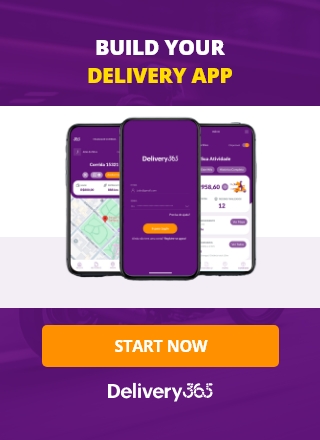Demand forecast in ecommerce: simple guide to nail it
In e-commerce, the key is to have exactly what the customer wants, at the right time, and to ensure that the product is delivered efficiently.
But how do you know what consumers are looking for? And even more so: how do you predict what they will want next week, next month or over the next year? This is where an essential element for business success comes into play: demand forecast in ecommerce.

What is the demand forecast in ecommerce?
The demand forecast in ecommerce consists in estimating future demand for certain products.
This includes both newly launched items and those that have been part of your portfolio for a while.
Let’s go straight to the point: the best way to forecast demand is by using your sales history.
You can identify patterns and trends by analyzing your order management system, for example. From there, you can estimate future sales and how they might fluctuate.
Only through well-structured data analysis is it possible to maintain stocks at ideal levels.
Achieving this balance is essential to ensure good financial results and business sustainability.
– 5 Inventory Management Strategies
How the demand forecast in ecommerce can help your business to thrive
Now that you know what e-commerce demand forecasting is and how it works, let’s talk a little about how it benefits your business.
Better inventory management
If you can understand the changing demands of your customers, you will be able to make better purchasing decisions, reducing costs with storage.
For example, your sales history may indicate that certain products will take a while to start selling in high volume, meaning you don’t need to stock them in large quantities yet.
Knowing this in advance reduces the risk of having dead stock while having to pay for more space.
Greater competitiveness
Today’s consumers are spoiled for choice, well-informed, and highly demanding. They know exactly what they want—and often want it urgently.
If your business doesn’t meet these expectations, a competitor certainly will. The right demand forecast in ecommerce helps prevent this from happening.
Knowing the product demands and their fluctuations puts your business ahead of the curve. This makes it possible to replenish stock before the market realizes the need to do the same.
Pricing strategy that reflects demand
Other operational sectors of your e-commerce also reap significant benefits from efficient demand forecasts.
Take as an example the pricing strategies. One of the most decisive elements when setting product prices is precisely the demand that exists for each item.
After all, when demand is high, there is room to apply higher values without losing competitiveness.
Variables Affecting E-Commerce Customer Demand
Predicting changes in consumer demand is really that essential? Does it influence the results that much? The answer to these questions is yes — precisely because of the countless variables that directly impact this level of demand.
Location
One of the best things about e-commerce is that a brand can serve customers all over the world.
Where consumers reside, however, will affect their demand for products.
People from different nations and cultures have different needs and expectations. A line that is popular in one country may not be so in another.
Seasonality
Seasonality is another factor that makes a big difference in product demand.
Significant events – such as the Black Friday – generate a significant increase in online sales of products that are not in such high demand at other times of the year.
It is recommended that companies develop a retail calendar to monitor these events to help the demand forecast in ecommerce.
– Black Friday: how it can help your e-commerce
Competition
The level of competitiveness in the market in which your company operates also directly influences customer demand. If a new competitor emerges, for example, it may capture part of your consumer base. Your product demand will therefore fall.
And it’s not always necessary to make a big move like opening a new company. Sometimes, a well-executed marketing campaign by a rival is enough to attract part of your audience, reducing demand for a particular item.
That directly impacts your inventory control decisions, cash flow management and other strategic areas of the business.
Steps to perform the demand forecast in ecommerce
The above should have convinced you of the importance of the demand forecast in ecommerce. But how do you do it?
Here are some simple steps to get started and nail it:
1. Identify goals
Before you start collecting and analyzing data, you should know what you want to achieve.
Define deadlines for your forecast and determine the questions you want to answer. For example:
- What volume of specific products will I sell?
- Will demand for certain lines fluctuate over time?
- What external events or factors can influence demand?
- If demand changes significantly, will my business infrastructure be able to handle it?
After clearly defining your goals, it is essential to ensure alignment of all parties involved.
Make sure your sales team, marketers, and key decision makers are on board and acknowledge that all points have been considered.
Only then will you be ready to begin the process of demand forecasting in a structured and effective way.
2. Collect and record data
We’ve already established that more data leads to more accurate forecasts. Any demand forecasting method you use should gather as much information as possible.
Remember that both internal and external factors influence product demand, so gather your sales data and information from outside your organization.
The first one should be easy to get from your CRM or order management platform. For the latter, you can conduct your own market research or rely on existing reports and surveys.
3. Analyze the collected data
With data in hand, it’s time to draw conclusions. This means analyzing your results to find patterns and trends.
It is possible to do this manually, but it is only feasible for smaller companies. When you have a lot of data, your best option is to rely on a data management platform AI-driven.
These solutions can utilize machine learning to gain insights quickly.
– Main types of AI in eCommerce
4. Make adjustments
You’ve collected data and identified valuable patterns. Now, what’s the next step? This is when the process starts to generate concrete results for your e-commerce business.
It is the phase in which you adjust business operations based on forecasts made.
For example, suppose your analysis indicates a drop in demand for a particular product. In this case, you can reduce future orders to avoid excess inventory. You may also identify that a certain item has a very seasonal sales cycle, which would justify keeping it available only during specific times of the year.
Use demand forecast in ecommerce to ensure the best customer service

The demand forecast in e-commerce consists of anticipating the future based on concrete and reliable data.
When done correctly, it allows you to tailor your operations to precisely meet your customers’ needs. This level of personalization is exactly what modern consumers expect.
The next step in providing exceptional e-commerce service is ensuring that deliveries are made on time and without errors.
Delivery365 app is specialized in delivery solutions for e-commerce, offering advanced order tracking technology, its own freight quotation system and secure online payment methods.
Ideal for online stores and professionals looking for agility, efficiency and total control over deliveries.
– What types of companies can use delivery services?
With a network of hundreds of registered delivery people, Delivery365 app is a revolution in logistics for e-commerces of all sizes, guaranteeing fast and reliable deliveries.
To learn more, visit our website, discover our solutions and ensure the best delivery strategy for your business.


